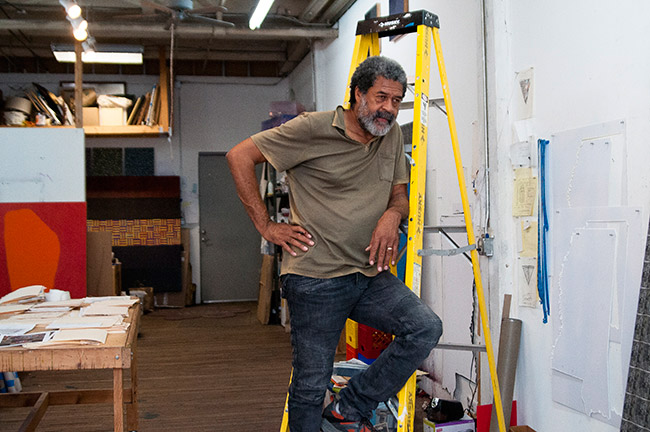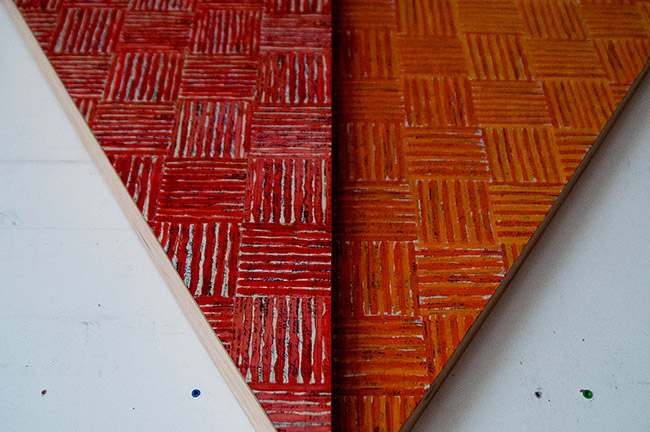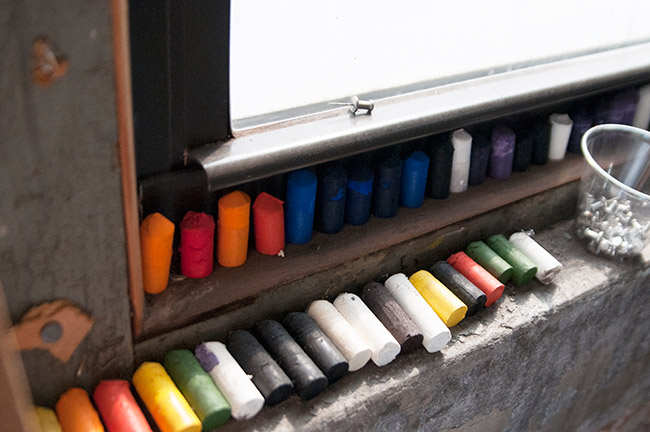Inside\Within is a constantly updating web archive devoted to physically exploring the creative spaces of Chicago's emerging and established artists.
Support for this project was provided by The Propeller Fund, a joint administrated grant from Threewalls and Gallery 400 at The University of Illinois at Chicago.

Search using the field below:
Or display posts from these tags:
3D printing 3D scanning 65 Grand 7/3 Split 8550 Ohio 96 ACRES A+D Gallery ACRE animation Art Institute of Chicago Arts Incubator Arts of Life audio blogging Brain Frame CAKE Carrie Secrist Gallery casting ceramics Chicago Artist Writers Chicago Artists Coalition Chicago Cultural Center Cleve Carney Art Gallery Clutch Gallery Cobalt Studio Coco River Fudge Street collage collection Columbia College Chicago Comfort Station comics conceptual art Contemporary Art Daily Corbett vs. Dempsey Creative Capital DCASE DePaul University design Devening Projects digital art Dock 6 Document drawing Duke University dye Elmhurst Art Museum EXPO Chicago Faber&Faber fashion fiber Field Museum film found objects GIF Graham Foundation graphic design Harold Washington College Hatch Hyde Park Art Center illustration Image File Press Imagists Important Projects ink installation International Museum of Surgical Science Iran Jane-Addams Hull House Museum jewelry Joan Flasch Artist's Book Collection Johalla Projects Julius Caesar Kavi Gupta Links Hall Lloyd Dobler LVL3 Mana Contemporary metalwork Millennium Park Minneapolis College of Art and Design Monique Meloche Museum of Contemporary Art Chicago (MCA) Museum of Contemporary Art Detroit (MOCAD) Museum of Contemporary Photography (MoCP) National Museum of Mexican Art (NMMA) National Resources Defense Council New Capital Northeastern Illinois University Northwestern University Ox-Bow painting paper mache Peanut Gallery peformance Peregrine Program performance photography PLHK poetry portraiture printmaking public art Public Collectors publications Renaissance Society risograph rituals Roman Susan Roots&Culture SAIC screen printing sculpture Sector 2337 Shane Campbell Silver Galleon Press Skowhegan Slow Smart Museum Soberscove Press social practice South of the Tracks Storefront SUB-MISSION Tan n' Loose Temporary Services Terrain Terrain Biennial text-based textile textiles The Banff Centre The Bindery Projects The Cultural Center The Franklin The Hills The Luminary The Packing Plant The Poetry Foundation The Poor Farm The School of the Art Institute of Chicago (SAIC) Threewalls Tracers Trinity College Trubble Club University of Chicago University of Illinois at Chicago (UIC) University of South Florida at Tampa Valerie Carberry Vermont Studio Center video weaving Western Exhibitions wood carving woodwork Yellow Book Yollocalli Arts Reach zinesInside\Within is produced in Chicago, IL.
Get in touch:
contactinsidewithin@gmail.com
McArthur Binion's Labor-Based Narratives

McArthur works with relics of his past, placing tiled autobiographical documents into his paintings. Within his DNA Studies series McArthur focused on the individuals that comprised his address book, while his new series, Haints, points to his Mississippi past and Southern upbringing. Forced to be left-handed as a child, McArthur has long embraced using both hands, keeping both sharp to ensure lack of fatigue during his labor-intensive process.
What is your day-to-day work schedule like?
MB: I have started work before 8 a.m. every day for some time now. I did for the last year and a half—every day I am in town I worked. This year I am on sabbatical from teaching. I worked exceptionally hard the last year and a half. I have a show in both Paris and London next year.
Can you explain your new haint-based works?
They involve reverse maps of Mississippi, and are an extension of the DNA Studies. They are larger self-portraits about who I am and how I live—all the information is there. These works are specifically about me. They are about my involvement with haints and Mississippi, because I was born in Mississippi. Haints are about people that you knew that are dead—so the ghosts are real. It’s really emotional with the work. The DNA Studies are based on my phonebook. Everybody I know in my entire life is in there. Each day for the months I painted those, I relived every day of my life because of all of those names.

How do the address books within your DNA Studies series speak about you internally?
The phonebook started about ’72, and during that time there were only three ways that you would communicate with people: in person, the telephone, or a letter. That was one of the most personal things you had. The names weren’t just the people that nurtured me, that address book was my entire life. Very few people keep the same book for that many years. If you see it, it’s really raw. It’s still all together, but there is sepia ink, black pen, ball point, cross outs— it’s a real biography.
How are you transforming that series into a community project for your installation at the 79th Street Red Line station?
That’s being made as we speak. I haven’t seen the final results yet— that will be by the end of the year. I was in Germany, I oversaw the project. It looks good conceptually, but let’s see how it works. It’s a glass-based piece and I like the transparency of it and the whole idea that we are using images from a prior time in that neighborhood.
Did you ask for address books from community members?
That didn’t work because no one keeps them around. Everyone has their phone now for that, for at least the last 10-15 years. I could have hired people to make new ones, but I didn’t want to do that. We decided to use photographs from the newspapers from the area from I think the 40s and 50s. I wanted the images to be community-based.

For the Haints series, are you utilizing your birth certificate within the pieces?
Yes. The birth certificates are the same dimensions as the phonebooks were in the DNA studies. I found that dimension and that scale for me makes everything even. It is not exactly musical time, but it is 4X4. You need four to make things blossom—that’s my thinking. I like to think my work is real primal and real simple. The shapes come out of some sort of emotional space.

Why do you feel like you need intense labor as a core part of your practice?
It is just the way it is. For me, the hand is very important in terms of how I see painting and the innovations I have made already. I was never interested in Rembrandt and those kinds of painters. I think right now being smart is so easy. To make art without labor—aren’t you missing a part of it? I would be missing a part of the joy and the surprise that you can set up for yourself with your own hands. A brain, everyone has one of those. I am one of eleven kids, and we were all really good athletes. I have pitched no-hitters and stuff like that, but there are very few people that achieve at a very high pace. You have to be very powerful. My position is thinking is easier.
I started as a young artist as a writer, a poet. I think this is an important part of this thing too. When it came to art making, I already had my voice, I just had to find my hand.
Why did you force yourself to be ambidextrous?
I work with my left and right hand because I was in fact born a lefty. I was born in Mississippi which relates to haints as well. Haints is not about black culture, it is Southern culture. There is a belief that left-handed was a detriment or a curse. My mother had my older sister, who was my chief caregiver, train me not to use my left hand by force, and to use my right. I found this out when I was 55 or 60. Long before I found that out, I would set up a game. When I was in Chelsea, I had a tennis ball and would put a piece a tape at the same distance as a basketball foul line. I would hit a line above my freight elevator seven out of ten times with my left and then right. Now what I do to keep my left sharp is shoot tacks into small cups across the studio. I try to hit each with each arm.

Is your works’ narrative stronger because you don’t have any outside influences on your practice or canvas?
Absolutely. For this whole year and a half, I didn’t really read anything because I didn’t want any input. I don’t want anyone else’s genius coming in. I don’t listen to music while I work, I maybe have listened once or twice in the last year and a half. I am married with three children and I had to tell my family that I was going to be away and get totally into this work. For the first 19-20 years of my life I had a speech block. Now it is a slight stutter. What happens is that when you say stuff you really have to have it thought out. I started as a young artist as a writer, a poet. I think this is an important part of this thing too. When it came to art making, I already had my voice, I just had to find my hand. My art doesn’t come from art history, thank god. I was able to make it myself. It’s a hard thing to do.


